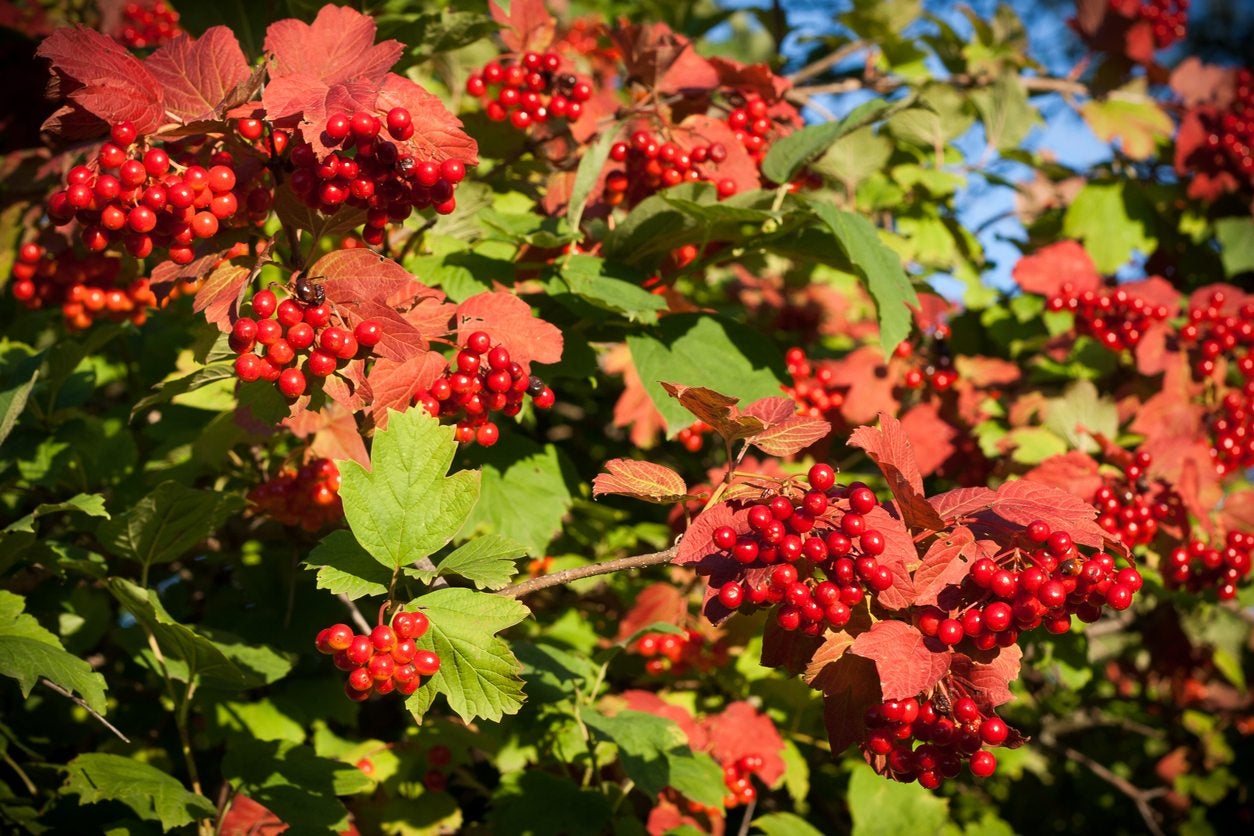Types Of Viburnum Plants: Choosing Varieties Of Viburnum For The Garden

Amy Draiss

Viburnum is the name given to a very diverse and populous group of plants native to North America and Asia. There are over 150 species of viburnum, as well as countless cultivars. Viburnums range from deciduous to evergreen, and from 2 foot shrubs to 30 foot trees (0.5-10 m.). They produce flowers that are sometimes extremely fragrant and sometimes downright nasty smelling. With so many varieties of viburnum available, where do you even begin? Keep reading to learn about some of the common viburnum varieties and what sets them apart.
Common Types of Viburnum Plants
Choosing varieties of viburnum for the garden begins with checking your growing zone. It’s always a good idea to ensure whichever type you choose will thrive in your area. What are the most common viburnum varieties? Here are a few popular types of viburnum plants: Koreanspice – Large, pink clusters of fragrant flowers. 5 to 6 feet (1.5-2 m.) tall, green foliage turns bright red in autumn. Compact variety reaches only 3 to 4 feet (1 m.) in height. American Cranberry – American cranberry viburnum reaches 8 to 10 feet (2.5-3 m.) in height, produces red edible fruits in the fall. Several compact varieties top out at 5 to 6 feet (1.5-2 m.) tall. Arrowwood – Reaches 6 to 15 feet (2-5 m.) tall, produces scentless white flowers and attractive dark blue to black fruits. Its foliage changes dramatically in the fall. Tea – Grows 8 to 10 feet (2.5-3 m.) high, produces modest white flowers followed by very high yields of bright red berries. Burkwood – Reaches 8 to 10 feet (2.5-3 m.) high. It’s very tolerant of heat and pollution. It produces fragrant flowers and red to black fruit. Blackhaw – One of the big ones, it can reach 30 feet (10 m.) in height, though it usually stays closer to 15 feet (5 m.). It does well in sun to shade and most soil types. A tough, drought-hardy tree, it has white flowers and black fruit. Doublefile – One of the most attractive viburnums, it grows 10 feet high and 12 feet wide (3-4 m.) in an even spreading pattern. Produces beautiful, large white flower clusters. Snowball – similar in appearance to and oftentimes confused with the snowball hydrangea, this viburnum variety is quite common in garden landscapes.
Sign up for the Gardening Know How newsletter today and receive a free copy of our e-book "How to Grow Delicious Tomatoes".

The only child of a horticulturist and an English teacher, Liz Baessler was destined to become a gardening editor. She has been with Gardening Know how since 2015, and a Senior Editor since 2020. She holds a BA in English from Brandeis University and an MA in English from the University of Geneva, Switzerland. After years of gardening in containers and community garden plots, she finally has a backyard of her own, which she is systematically filling with vegetables and flowers.
- Amy DraissDigital Community Manager